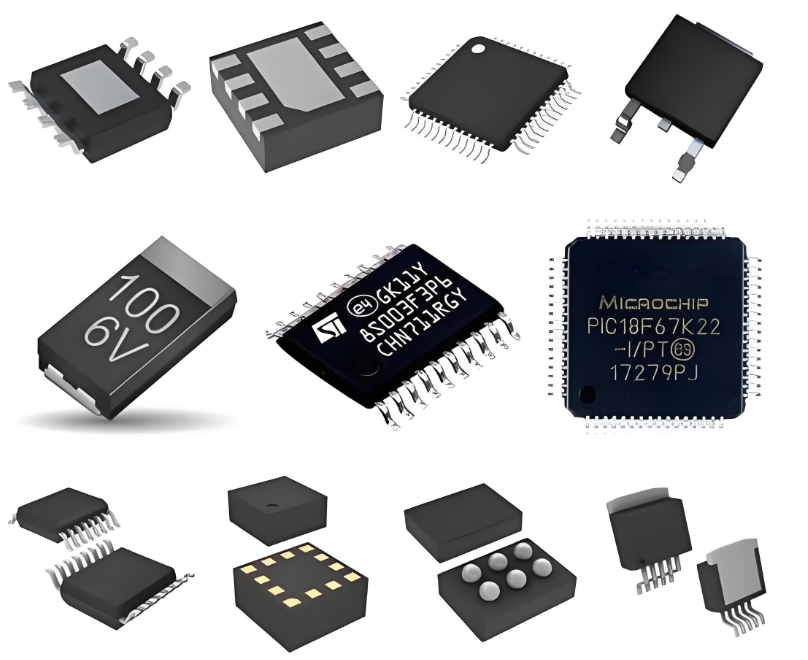**High-Performance Data Acquisition Systems: Integrating the AD9225ARS 12-Bit ADC for Precision Signal Processing**
The relentless pursuit of higher fidelity in digital systems has made high-performance data acquisition (DAQ) the cornerstone of modern signal processing. At the heart of these systems lies the analog-to-digital converter (ADC), a critical component responsible for bridging the physical analog world and the digital domain. For applications demanding both speed and accuracy, the **AD9225ARS 12-bit ADC** emerges as a pivotal solution, enabling engineers to design systems capable of **precision signal processing** with exceptional reliability.
The AD9225ARS, a member of Analog Devices' esteemed ADC portfolio, is a monolithic 12-bit, 25 MSPS (Mega Samples Per Second) sampling converter. Its architecture is optimized for applications requiring a high signal-to-noise ratio (SNR) and low power consumption without sacrificing dynamic performance. Key specifications include a **differential nonlinearity (DNL) of ±0.5 LSB** and a signal-to-noise and distortion (SINAD) rating typically exceeding 68 dB at 10 MHz input, ensuring that minute analog details are captured with minimal error. The device operates on a single +5V power supply, simplifying power management design, and features an internal reference and a proprietary sample-and-hold circuit, which provides versatility and reduces external component count.
Integrating the AD9225ARS into a DAQ system requires meticulous attention to several critical areas to achieve its full performance potential:
1. **Front-End Signal Conditioning:** The ADC's performance is only as good as the signal presented to it. A properly designed differential driver circuit is paramount to mitigate common-mode noise and maximize the dynamic range. Utilizing high-speed, low-distortion operational amplifiers like Analog Devices' AD8138 to drive the ADC's differential inputs ensures that the analog signal integrity is preserved before conversion.
2. **Clock Integrity:** A low-jitter, stable clock source is non-negotiable for high-speed sampling. Clock jitter directly translates into aperture uncertainty, which degrades the SNR, especially for higher input frequencies. Employing a dedicated clock generator or a jitter-cleaning PLL (Phase-Locked Loop) is essential to provide the AD9225ARS with a clean clock signal, thereby preserving its excellent dynamic performance.
3. **Power Supply and Decoupling:** High-speed switching within the ADC can generate noise on the power rails. **Robust power supply decoupling** using a combination of bulk, tantalum, and ceramic capacitors placed as close as possible to the power pins is critical to maintain stability and prevent noise from degrading the conversion result. A solid ground plane is equally important for providing a low-impedance return path.

4. **PCB Layout Considerations:** A well-designed printed circuit board (PCB) is the foundation of a high-performance system. Key practices include:
* **Partitioning** the board into analog, digital, and mixed-signal sections.
* Using a **continuous ground plane** to avoid ground loops.
* Keeping analog input traces short, differential, and impedance-controlled.
* Isolating the digital output lines (like the data bus and out-of-range indicator) from the sensitive analog inputs to prevent digital feedback.
5. **Digital Interface and Data Handling:** The AD9225ARS provides parallel digital outputs. For seamless data transfer to an FPGA or DSP, it is crucial to synchronize the data capture with the ADC's clock. Implementing first-in-first-out (FIFO) buffers or direct memory access (DMA) in the processing unit ensures that no data points are lost during high-speed continuous acquisition.
The integration of the AD9225ARS finds its strength in numerous demanding applications. It is exceptionally well-suited for **medical imaging equipment** such as ultrasound machines, where its combination of speed and resolution allows for clear image reconstruction. In communications infrastructure, it serves in **software-defined radio (SDR)** for channelization and demodulation. Furthermore, it is ideal for advanced instrumentation like radar systems, optical networking, and high-speed industrial automation, where **precision measurement of high-frequency signals** is a fundamental requirement.
**ICGOO**DFIND: The AD9225ARS 12-bit ADC is a robust and high-performance converter that, when integrated with careful attention to signal conditioning, clocking, power integrity, and PCB layout, forms the core of a superior data acquisition system. Its ability to accurately digitize high-speed signals makes it an indispensable component for engineers designing next-generation precision electronic systems across medical, communications, and industrial fields.
**Keywords:** Data Acquisition System, AD9225ARS, Precision Signal Processing, Analog-to-Digital Converter, High-Speed Sampling
